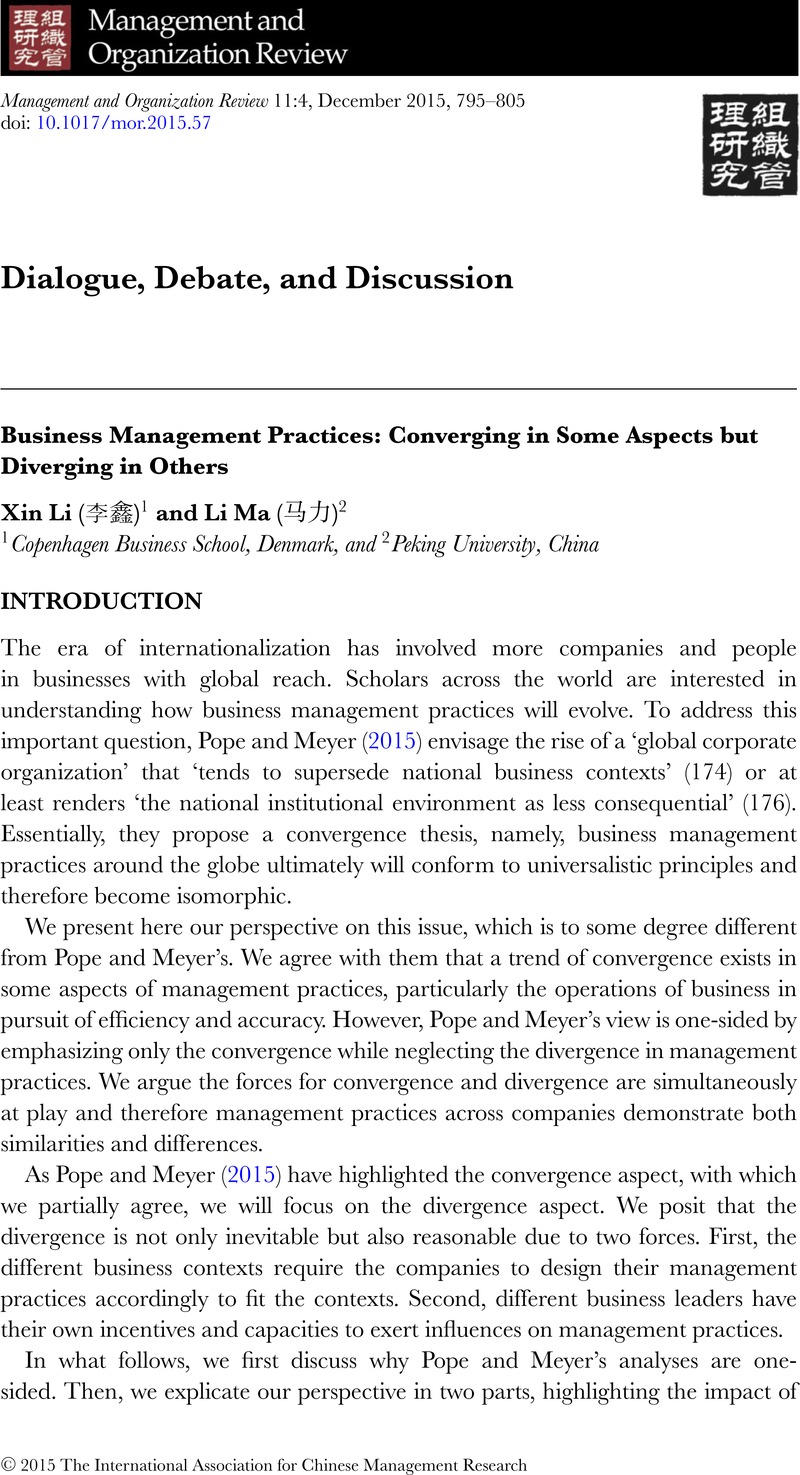Crossref Citations
This article has been cited by the following publications. This list is generated based on data provided by Crossref.
Pope, Shawn
and
Meyer, John W.
2016.
Local variation in world society: six characteristics of global diffusion.
European Journal of Cultural and Political Sociology,
Vol. 3,
Issue. 2-3,
p.
280.
Li, Xin
Worm, Verner
and
Xie, Peihong
2018.
Is Yin-Yang superior for paradox research?.
Cross Cultural & Strategic Management,
Vol. 25,
Issue. 3,
p.
501.
Couper, Carole
2019.
Institutional Bridging for SME High-Distance Internationalisation to
China: A Contextualised Explanation.
Management and Organization Review,
Vol. 15,
Issue. 02,
p.
307.
Sun, Lu
Wang, Yanwen
and
Che, Hangjun
2022.
Improving and Evaluating Business Management in the Digital Economy Based on Data Analysis.
Security and Communication Networks,
Vol. 2022,
Issue. ,
p.
1.



